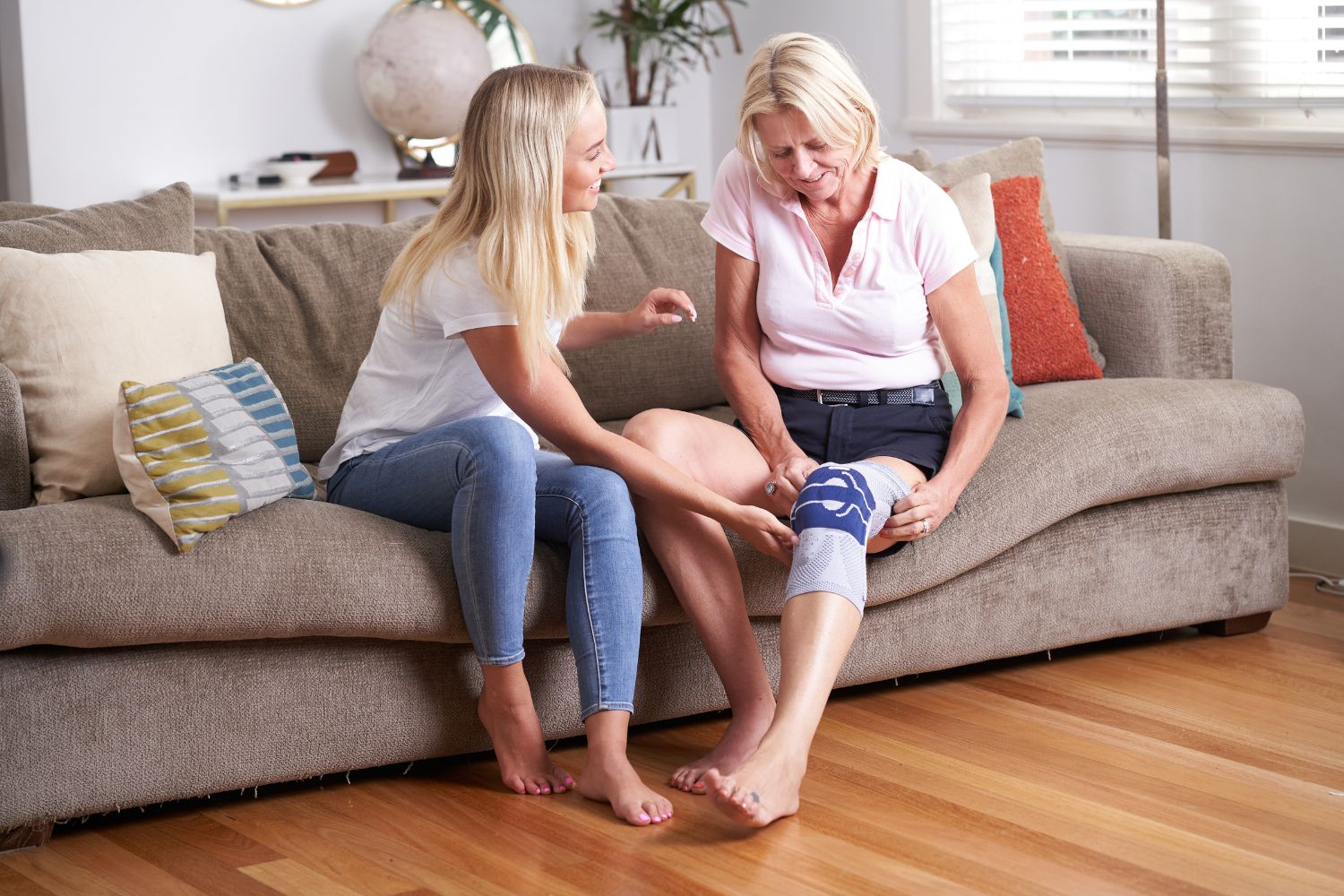Considering surgery involves cutting through tissues, post-op pain is to be expected. But for 1 in 4 people, it could become chronic. Fortunately, while chronic post-op pain is often more challenging to manage, you can take a few steps to reduce its severity and minimise its impact on your quality of life. Let's get into it.
Anatomy of chronic post-surgical pain
Chronic or persistent post-surgical pain is pain that lasts 2 or more months post-procedure. It can be caused by various factors, including:
- Nerve damage. A surgeon may accidentally nick a nerve during the procedure. You may feel burning sensations and electric shocks. Nerve pain most commonly follows operations on the spine but may also develop after other joint surgeries.
- Scar tissue. Scar tissue growth is a perfectly normal part of the healing process. However, as scar tissue is tougher and less flexible, it may pull on surrounding tissues, compress or otherwise irritate nerve endings, or even trap nerve cells.
- Wound inflammation. Absent an infection, getting a bit of inflammation around the treatment site is normal. It’s also normal to feel pain as a result. But in some cases, wound pain may become chronic.
- Chronic pain after surgery can also result from physiological factors like stress.
Exercise

While it may be tempting to move as little as possible, immobilisation is bad for your body and may even worsen your pain. Conversely, exercise can help relieve it (even in chronic and post-operative cases). Current research shows that the sooner you’re up and moving after your surgery, the better.
Exercise helps relieve pain in several ways.
- It keeps stiffness at bay. Stiff muscles and tendons will be much more prone to damage than flexible tissue. Although strenuous exercise is also known for causing muscle stiffness, it’s highly unlikely your physio will prescribe such activities after your surgery.
- It helps maintain muscle strength. The stronger your muscles, the better they can support your healing joints.
- It releases endorphins. Research shows that these chemicals function similarly to morphine.
Now, as we mentioned, not all exercise is good. Many joint surgeries can take several weeks (if not months) to fully heal, and subjecting the joint to too much strain or pressure can slow the healing process. Additionally, while exercise can help relieve pain, pain can sometimes complicate exercise. Pain signals can often interrupt movement signals, leading to worse proprioception and stability. And when you’re exercising to relieve pain, it can be difficult to tell apart the regular chronic pain signals from new “stop it” ones.
For the best results, you’ll need to work closely with a physio to determine the optimal routine for you. And on top of that, it’s best to exercise in a brace.
Wear a brace

SofTec Genu
Braces are great tools in post-surgical pain management. In no particular order, they can:
- Reduce pressure on the affected area. Compression-knit braces like our GenuTrain activate muscle fibres to provide better internal support. Semi-rigid and rigid braces like our SofTec and SecuTec Genu do so externally through straps and stays.
- Reduce muscle tension. Like scar tissue, tense and stiff muscles can tug at sensitive treatment sites, causing pain. But as compression braces boost circulation and help your muscle fibres work better, they can relieve it.
- Retrain muscles. Unfortunately, surgeries can negatively affect how muscles work. Lower activity levels and more pain signals can cause muscle weakness and interrupt usual nerve activity. This can lead to more pressure on treated tissues as they’re forced to pick up the slack. It can also cause poor joint traction and uneven pressure distribution, which may lead to further damage down the line. Fortunately, compression knit communicates directly with the muscle fibres, activating them and helping them support your treated joint better.
- Reduce inflammation, relieving pain that may have developed as a result.
- Help you exercise. The additional support of a brace can make it easier for you to stick with your prescribed exercise routine.
Check out our collected studies on brace effectiveness: Collected Studies
Meditate
Yes, mindfulness techniques like deep breathing exercises, cognitive behavioural therapy, and meditation can help manage pain by activating a physiologic relaxation response in the short term and even go so far as to rewire the brain in the long term.
According to the Journal of Psychiatry, meditation (when done frequently and long-term) can change the structure of your brain, making you less sensitive to pain. And according to a study published in the National Library of Medicine, it can help you regulate the feeling of pain as it comes, reducing it by up to 22%.
On the other end of the spectrum, stress, anxiety, and depression can worsen the pain. So, it's always a good idea to combine physiological and psychological pain management techniques.
Don’t overlook pain aids
Chronic post-surgical pain may be more intense than usual aches and pangs, but that doesn’t mean it won’t respond similarly to pain aids.
For good reason, methods like heat, ice, and elevation are widely used for injury and surgery recovery. Ice can numb an agitated area and reduce swelling. Heat can relax tense muscles, reducing undue pulling on the treated area. Elevation improves circulation and minimises swelling.
Test them out and see how you go.
Watch for red flags
Chronic post-op pain may not be dangerous in and of itself, but you’ll need to watch for a few warning signs to ensure it stays that way.
- Is it disrupting your sleep? Especially when you’re on pain relief medications, post-op pain shouldn’t keep you awake or wake you up.
- Is it getting worse? Chronic pain may worsen and get better depending on what you do throughout the day. But if it’s deteriorating progressively over several days, it could be a sign that something’s wrong
- Is there new pain? For example, dull joint pain won’t turn into sharp nerve pain on a whim
- Is it stopping you from doing simple activities and tasks? Post-op pain can be brutal in the first few days, and chronic pain lasting several months won’t be a walk in the park, either. But if your pain stops you from doing simple movements like getting out of a chair, holding a hairbrush, or bending to pick something up, that could point to a worse problem.
If you experience any of these, speak with your doctor ASAP. The sooner the underlying problem is found, the better.
To sum up
Chronic post-surgical pain can be difficult to get under control. But if you take an active approach to pain management, you can do so. Tools like braces and ice packs and techniques like exercise and meditation can go a long way to helping you find relief.
If you require assistance selecting the right product for your needs or wearing the brace, call us on 098015660 or contact us via live chat.
Do you have private health? Most private health extras will cover Bauerfeind Products. Check to see if yours is included. Bauerfeind Private Health Insurance Inquiry.
















